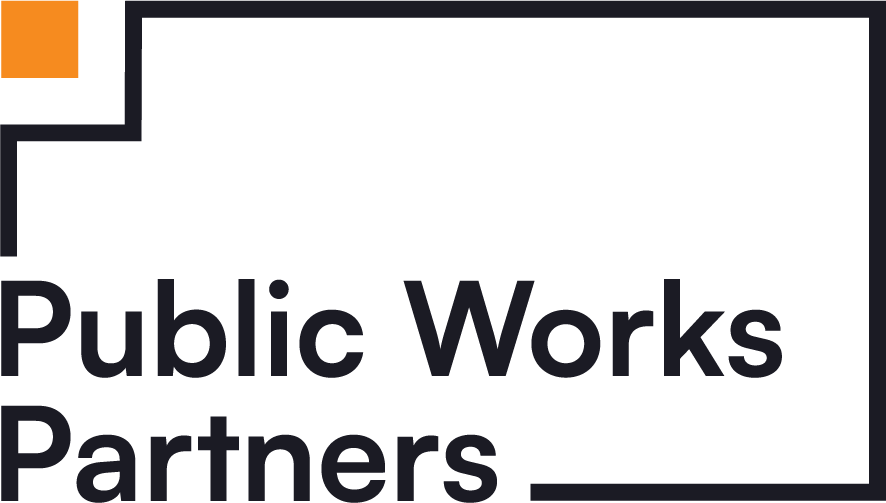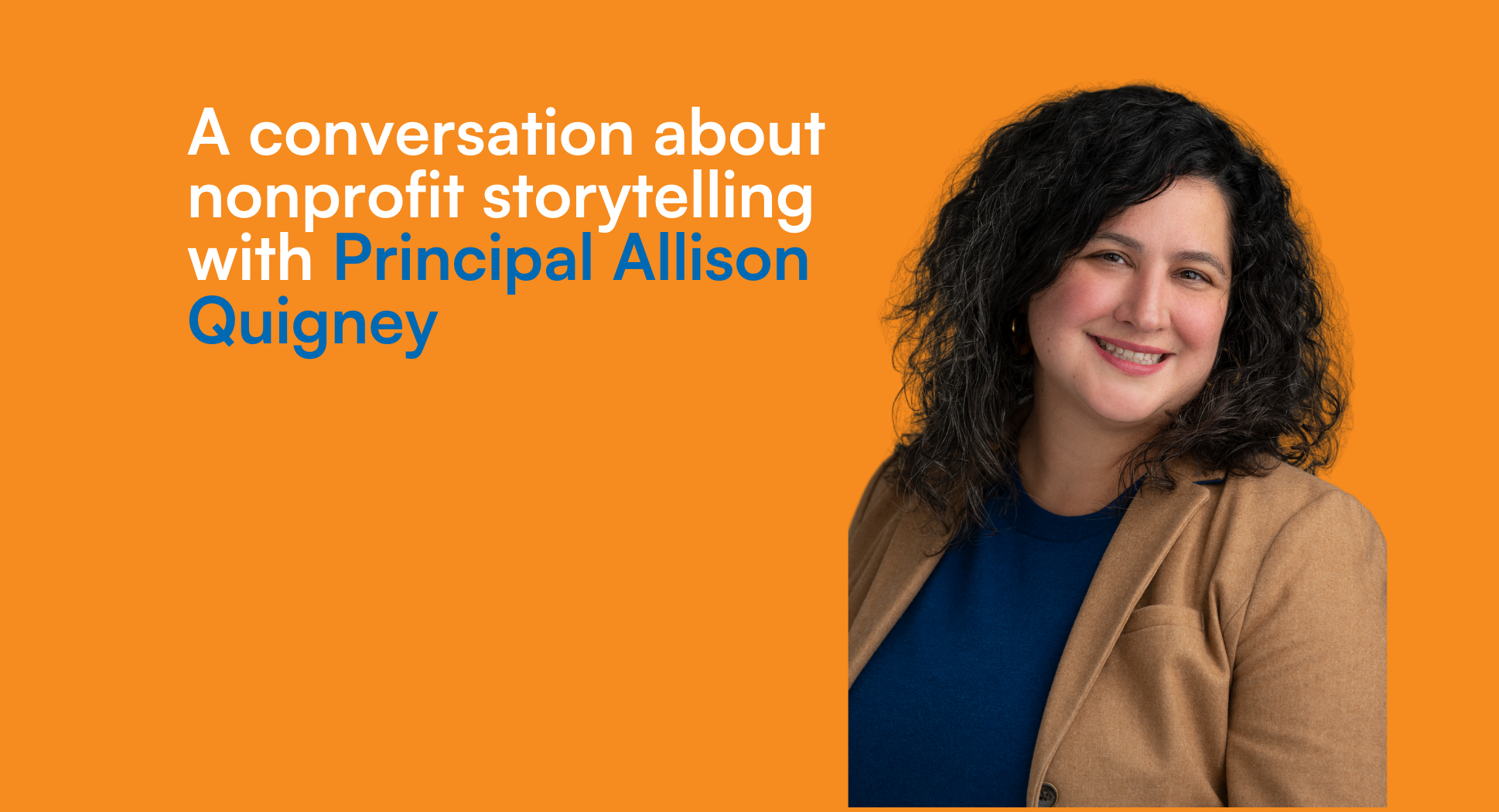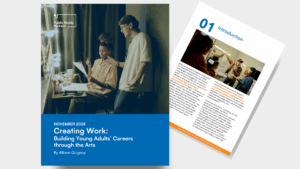Did you know that Public Works Partners was launched in 2010? Since then, we’ve grown from three to nearly thirty team members, expanded into our two distinct service areas—organizational and community health—moved three times until finding our current home on 38th Street, persevered through a pandemic, rebranded, and launched our California office. These moments, together, create the story of the firm, and they inform where we go and what we do next.
Understanding the trajectory of an organization—how it has changed over time, and why—is an exercise that comes up across almost all of our projects, especially with nonprofit clients. What does it mean to really know the narrative of your organization, and why is it important to do so?
Analyst Ilan Ackelsberg sat down with Principal Allison Quigney to talk about why stories are important, and how storytelling is infused into our project work.
(This interview has been edited lightly for length and clarity.)
IA: To start, can you talk a little bit about your own story? What’s your background with nonprofits, and how did Public Works Partners start working with nonprofits?
AQ: It goes back to when I was a kid, volunteering with nonprofits in my community, and then through college. Professionally speaking, I started in City government, working with nonprofits who were collaborating with or being funded to run programs on behalf of New Yorkers. One of the things that was exciting for me about coming to Public Works was the opportunity to work with a wider variety of nonprofits on their internal issues, to hear what their needs are, and to help set them up for success. The idea of Public Works — and the origin of our work with nonprofits — is to bring management consulting principles to organizations that usually don’t have access to them. In practice, nonprofits will usually come to us and say, either, “Things are going really great, can you help us continue our positive trajectory?” or, “Hey, we’re having some struggles. Can you help us fix them?” The first kind of project can be anything from strategic planning to business planning or program design, and the second can include organizational assessments, evaluations, or implementation support, all of which tend to involve digging in with our clients and helping them fix operational issues.
IA: As a nonprofit changes over time, what are some key moments or inflection points during which we might be brought in to help shape that change?
AQ: Nonprofits have long trajectories. Some of the work we do is with brand new organizations, and some is with organizations that have been around for 70 years or more. There’s always evolution based on what their communities need. One obvious moment where we might come in, though, is when there’s a new executive director—that’s a key point in an organization’s story to rethink how it operates. When an executive director onboards, they’ll usually talk to frontline staff to understand the nitty gritty of the work they’re doing, and they’ll think critically about the tools and the strategies they’re using. It’s an opportune time to do a strategic plan. Nonprofits also experience inflection points because of external forces. COVID is a perfect example: during the pandemic, communities’ needs became so much broader and so much more intense, and many nonprofits expanded to better provide much-needed support. Lastly, organizations may have an idea of a new service they want to offer, but need help planning and implementing it. They could be opening new buildings or creating new service lines. That’s an area where we would come in and help them grow sustainably, through business planning and financial modeling.
IA: You’ve touched on positive trajectories and growth. What about the opposite? For organizations that are, for example, experiencing financial hardship, or offering a service that is no longer needed: how can understanding the story of the organization help here?
AQ: During transitional or challenging moments, it’s especially helpful to go back to the mission. If an organization has strayed too far from their mission, it’s likely that they’ll feel strained — maybe they’ve taken on too many programs, or they’re not meeting performance goals, or not getting fully funded. This can negatively affect sustainability, staff happiness, and the people being served. It could also be that an organization was once really good at providing a particular service, but now the requirements have changed, or the context in which they’re delivering those services have changed. Our role is to ask those tough questions of, “Do we want to keep doing this initiative?” and “How should we do it better? How do we improve?” The answers can be in training and helping staff improve their skills, in improving day-to-day operations, or even making the tough decision of sunsetting a certain service area. The important thing is that the story of a nonprofit is really based on what their mission is, who they’re trying to serve, and how well they are able to provide those resources to their community.
IA: Organizational storytelling can be both an internal and external exercise: there’s how the team understands each others’ roles — where each person is coming from — and then how the work is communicated to the public. Can you talk about how these two ideas fit together?
AQ: From an internal perspective, what matters most is that the team understands and has bought into where the organization is going — to be able to say, “We know who we’re serving, we understand what strategies we’re using, we know how all of these pieces fit together to have these tangible effects.” And it’s important to ground this organizational perspective in the stories of the communities an organization is serving, many of whom have complex and rich histories. Nonprofit staff are well-equipped to understand these stories because they’re the ones directly working with the people in those communities. They know the stories of the people they meet and the value of the resources they are connecting those people to. Then, it’s important organization-wide to put systems in place so that the workforce team knows about the healthcare team’s impact, and vice versa—not only so staff can feel good about their colleagues’ work, but also so they can refer clients to each other and amplify that impact. Externally, it’s less about the how and it’s more about the results. We ask, “What is the impact that our organization has had in the community?” And how do we talk about that in an effective way?
IA: How do you get from the work itself to communicating the impact of the work?
AQ: This gets tied together, again, in strategic planning. Strategic plans help organizations to say, “here’s where we want to go, and here’s how we’re going to get there.” It helps you make decisions about how to use resources over the next three to five years, and it’s also a communications tool — it gives you something to stand by when you have to explain the reasoning behind your decision-making. You can say, “It’s all there. Here’s who we are, here’s what we’re doing.” And then, sequentially, “here’s where we were, here’s where we are now, and here’s where we’re going.” They’re grounded in history and looking towards the future. Beyond strategic planning, it’s also important to communicate regularly to funders and partners. There’s a lot of focus on using data to tell a story, which is important, but real-life anecdotes can bring that data to life. Looking for opportunities to tell the stories of the people you’re working with — or in a place-based organization — the neighborhood you’re serving is key. You can bring more texture to the data by sharing people’s own journeys, especially if participants are telling those stories in their own words. And so at the most basic level, organizational storytelling is all about being able to say, “Here are the people we served, here is the impact of our work in our communities.” And to be able to make that clear in both a numbers way and in a human way. This is the essence.
As this insightful conversation illuminates, understanding and articulating an organization’s story is essential for supporting sustainable growth and maximizing impact. Whether nonprofits are navigating leadership transitions, expanding services, or facing new challenges, a clear narrative helps align their mission with their actions: both internally and externally. By using the concept of storytelling to drive the development of tools such as strategic plans, organizations can not only communicate their impact effectively but also make informed decisions about their future. At its core, organizational storytelling is about bridging the past, present, and future, ensuring that every step forward is grounded in a particular purpose.





